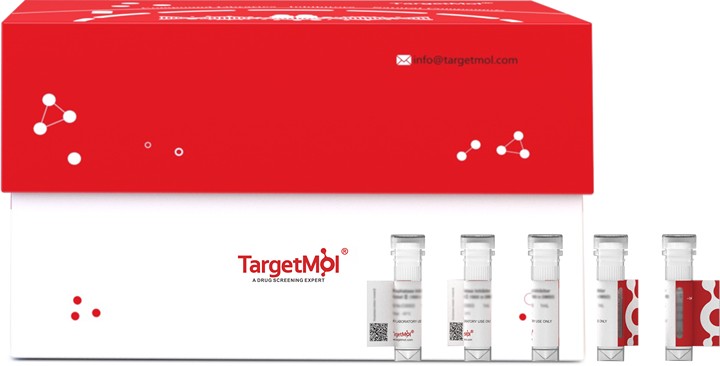
PLA2G2E Protein, Mouse, Recombinant (His)
TMPY-02162
Molecular Weight15.5 kDa (predicted); 18 kDa (reducing conditions)
Product group Chemicals
Overview
- SupplierTargetMol Chemicals
- Product NamePLA2G2E Protein, Mouse, Recombinant (His)
- Delivery Days Customer16
- CertificationResearch Use Only
- Molecular Weight15.5 kDa (predicted); 18 kDa (reducing conditions)
- Scientific DescriptionGroup IIE secretory phospholipase A2, also known as GIIE sPLA2, sPLA2-IIE, Phosphatidylcholine 2-acylhydrolase 2E and PLA2G2E is a secreted protein that belongs to the phospholipase A2 family. Mammalian secretory phospholipase A2s (sPLA2s) form a family of structurally related enzymes that are involved in a variety of physiological and pathological processes via the release of arachidonic acid from membrane phospholipids or the binding to specific membrane receptors. Phospholipases A2 / PLA2 are enzymes that release fatty acids from the second carbon group of glycerol. This particular phospholipase specifically recognizes the sn-2 acyl bond of phospholipids and catalytically hydrolyzes the bond releasing arachidonic acid and lysophospholipids. Phospholipases A2 / PLA2 are commonly found in mammalian tissues as well as insect and snake venom. Venom from both snakes and insects is largely composed of melittin, which is a stimulant of Phospholipases A2 / PLA2. Due to the increased presence and activity of Phospholipases A2 / PLA2 resulting from a snake or insect bite, arachidonic acid is released from the phospholipid membrane disproportionately. As a result, inflammation and pain occur at the site. PLA2G2E catalyzes the calcium-dependent hydrolysis of the 2-acyl groups in 3-sn-phosphoglycerides. Has a preference for arachidonic-containing phospholipids.
- Storage Instruction-20°C
- UNSPSC12352200
